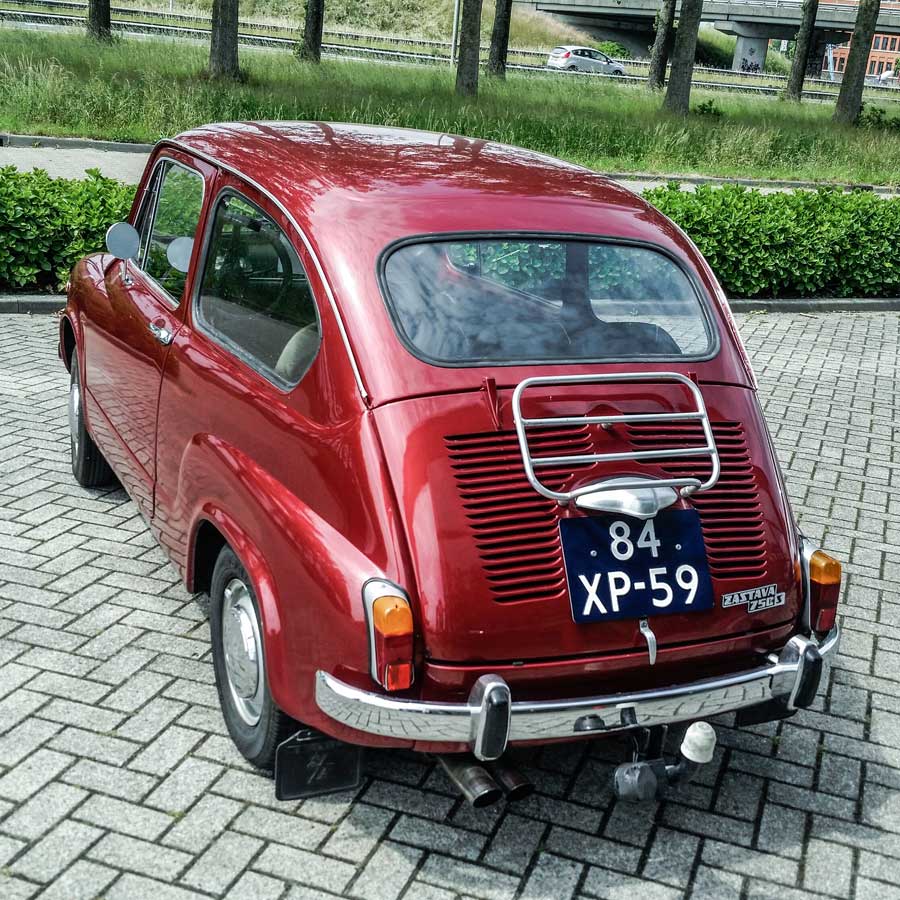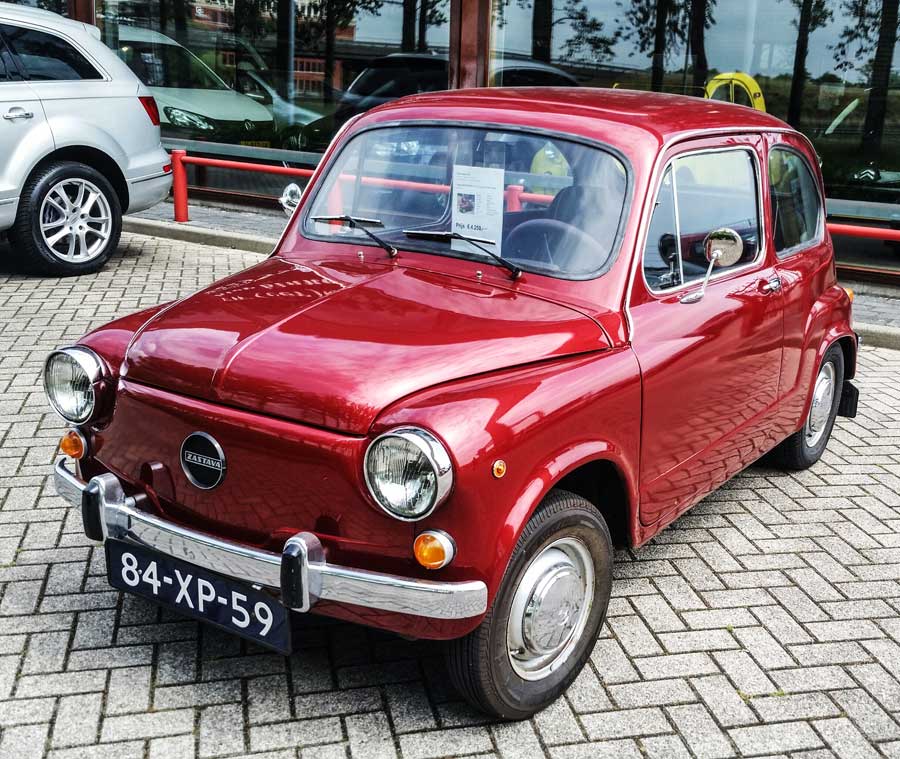We give you a number of reasons to drive Zastava. The first reason is of course the extremely competitive price. And the low maintenance costs. A Dutch car. This super mini, the Zastava 750 S, with active and passive safety for driver and passengers. The attractive text of the brochure from 1978 speaks about the eye-catching design.
By: Dirk de Jong
The real connoisseur knows that it is a version of the Fiat 600 that was produced under license in the former Yugoslavia.
Network of Zastava dealers
In the successful years of the brand, they introduced many models based on older Fiat versions, such as the Fiat 128, of which a different model was released under the GTL series (55 and 65). And do you remember the Zastava Yugo? A miracle of a car that was brought to the market in different versions.
Also read: SEAT 600. Sociedad Espanola Automoviles de Turismo 600
We came across the Zastava 750 S with the registration number 84-XP-59 at the Wester garage in Wognum in a particularly beautifully restored condition. His age of 42 is not visible. And talking about 'seeing'. We don't see this super mini driving much anymore, so it gets something 'exclusive'. In addition, it gives admiration and respect for cars from the past.
Also read: Driving impression Fiat 600 D (1964). Little happiness, great virtue








With this type I went to Paris with a casual girlfriend in 1976. In my memory in a darker red color. This copy had cruise control from la lettre: hand throttle! You pulled a lever at the bottom of the "dashboard" and the car kept a constant speed, super handy at about 90 per hour. You have to push the lever back to slow down.
In Paris the clutch cable broke… there I learned to shift gears at the right speed until we ended up with the right garage mechanic who quickly fixed the repair.
Zastava = "Flag"
The Zastava 750 was of course a success. For years it was at the top of the price lists as one of the cheapest cars in the Netherlands and for that money you had a proven Fiat 600 in Yugoslavian version. The Zastava 101 based on the Fiat 128 was also handy with its fifth door. Here he was not allowed to be called 101 but was given the name 1100.
What went wrong? Two things. The Zastava factory (except for that fifth door on the 1100) had never independently designed a car. They copied the Fiat 1300/1500, the Fiat 128 and the Fiat 600 under license. However, the Yugo was designed by itself. It was based on the Fiat 127, but this time Fiat did not want competition from the country on the other side of the Adriatic Sea. So, based on the 127, a whole new, somewhat square but still far from ugly car was built. But designing cars is a profession in itself. The Yugo was struggling with many teething problems, from badly closing doors to rattling dashboards and ripping plastic. Then you may want to be cheap, there is a lower limit to what the customers accept, and the trade-in value was therefore very poor. The Yugo was the first Zastava to be offered for sale in the United States.
What else went wrong? The Yugoslav Wars. Zastava was primarily a weapon manufacturer. One of the largest in Europe, even. And while no weapons were produced there, NATO bombed the car factory in Kragujevac in Serbia in 1999, causing 181 casualties.